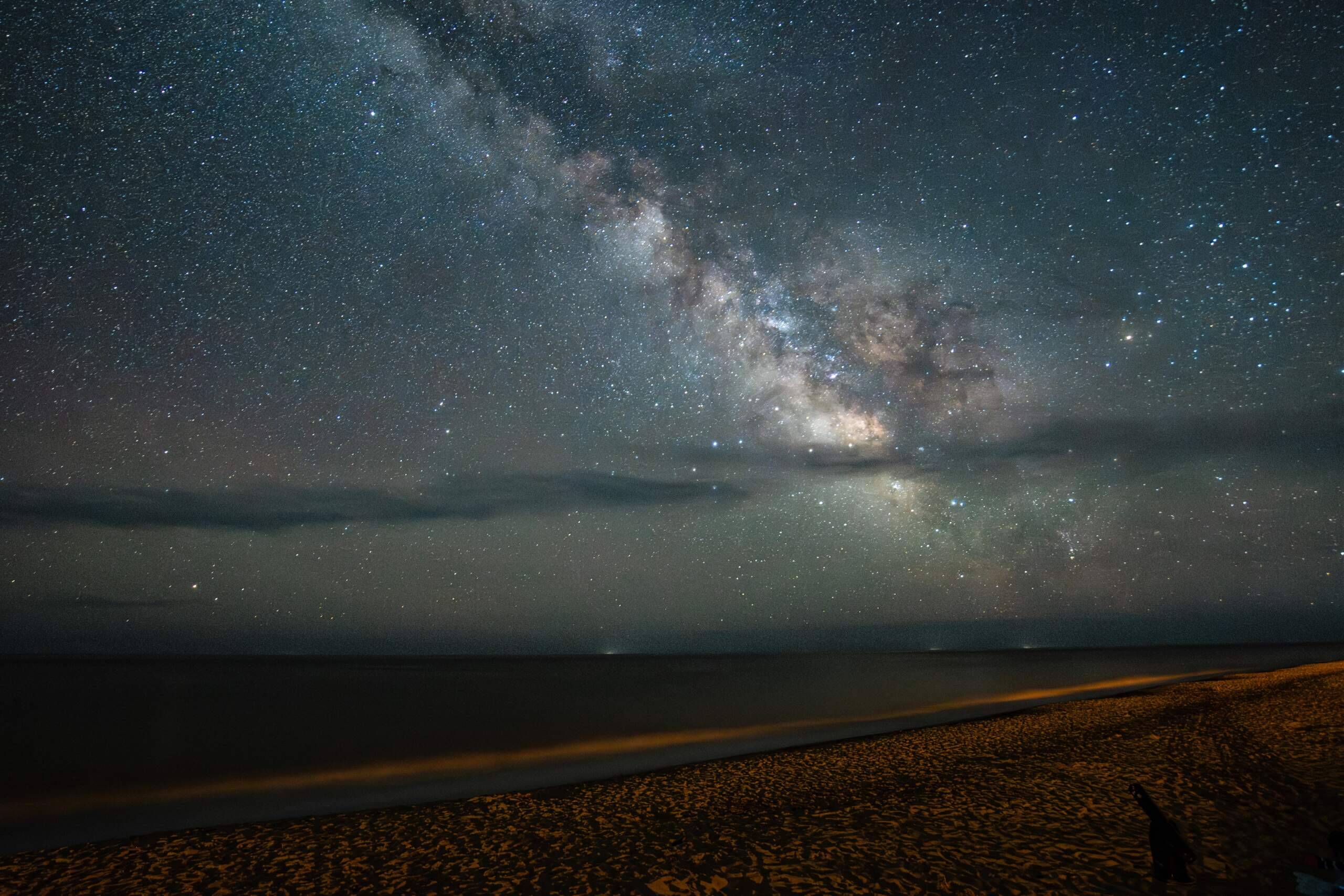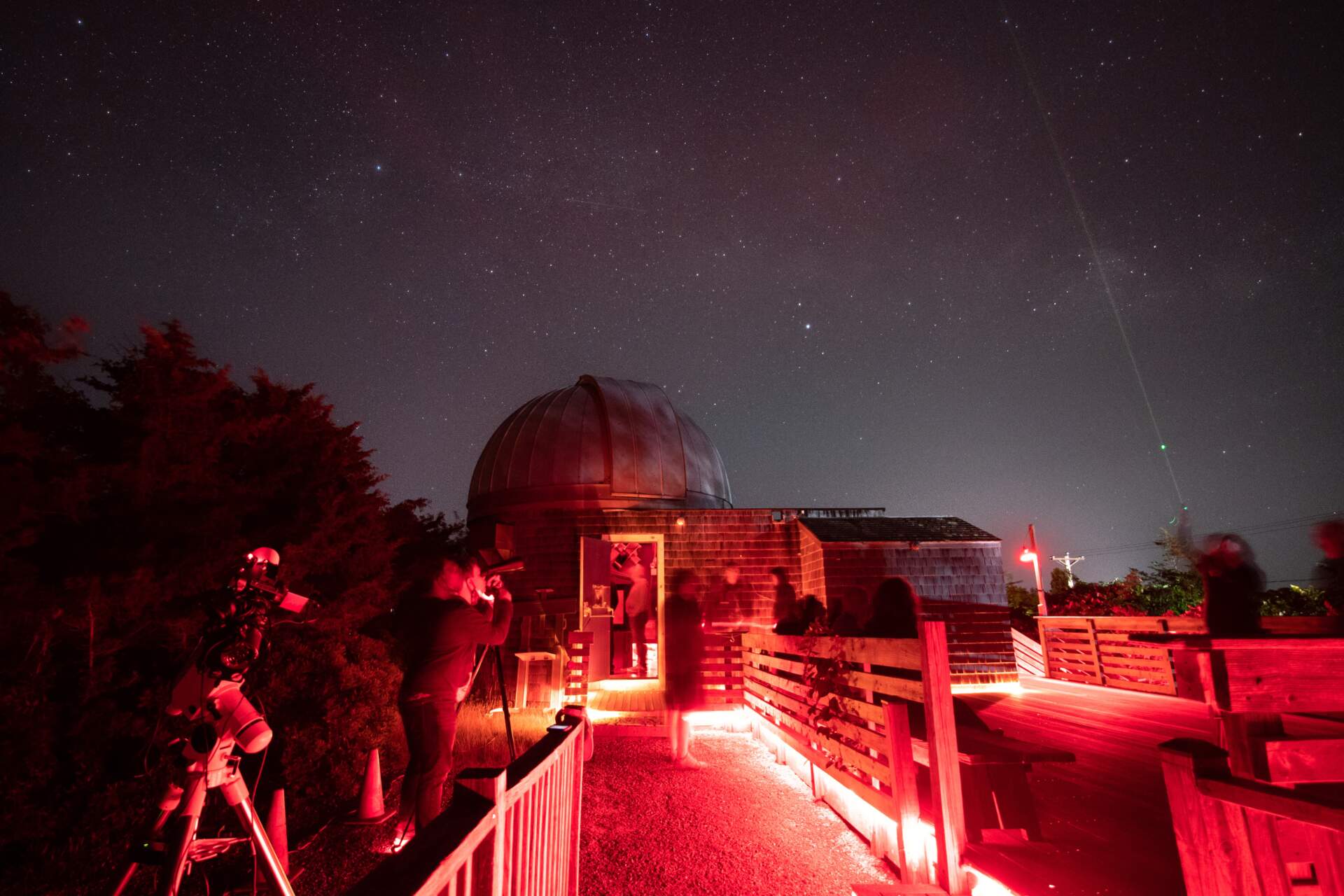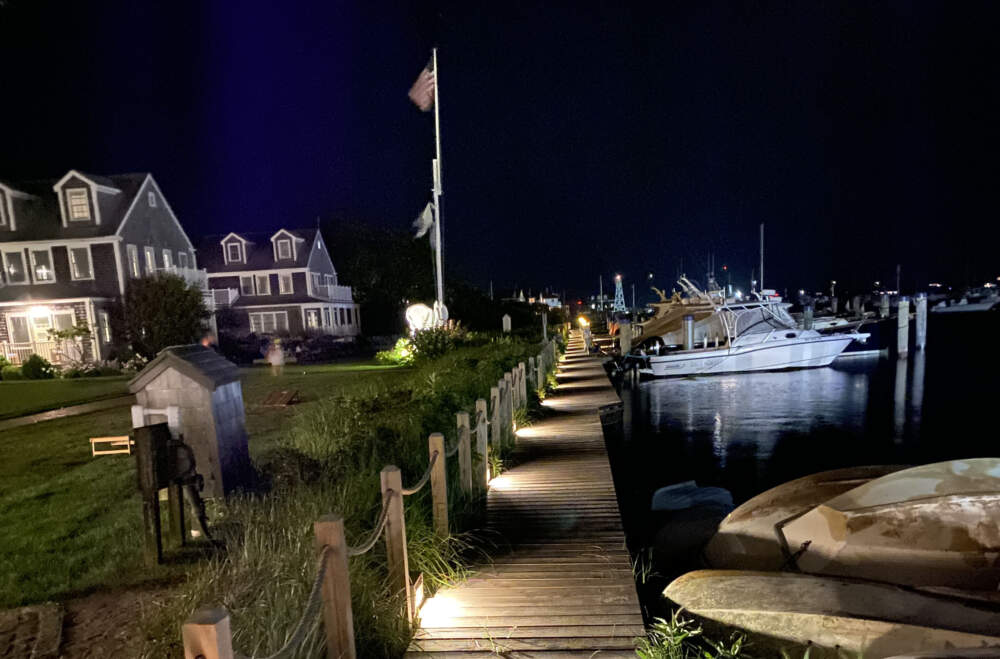Advertisement
You can see the Milky Way from Nantucket. Residents want to keep it that way

Nantucket, with its dark sky, is unique: It’s one of the few places in eastern Massachusetts where people can see the Milky Way with the naked eye.
But as new lighting, especially energy saving LED lighting, is installed across the island, the resulting glow has brightened the night sky, obscuring the wonders stargazers long to see.
Nantucket resident Gail Walker started receiving complaints about this light pollution and decided to do something about it.
“I love the night sky and I want to preserve it for my children and my grandchildren. But more broadly, I just wanted to do something to give back to the Nantucket community,” she said.
Walker created the nonprofit Nantucket Lights, and then got to work with the help of light experts. Together, they outlined several steps island residents could take to preserve their dark skies while maintaining the safety and guidance lighting provides.
More than just a nice view
It's not just about nice views at night. Walker said she's also concerned about other impacts of light pollution.
Many LED lights produce "blue light" — light from wavelengths in the blue end of the visible spectrum — which can be harmful to human and animal health. In recent years, many of these LEDs were installed as outdoor lighting.
“It's blue light that most affects animals and bugs and pollinators, fireflies, for example. And it is blue light that is most disruptive to us humans, to our circadian system, our ability to get to sleep,” said Kelly Beatty, communications officer for the Massachusetts chapter of the nonprofit Dark Sky International.
Disrupting the circadian system isn't just about sleep, it's linked to higher rates of cancer, diabetes, and other diseases. Blue light can also affect baby sea turtles' orientation after hatching, owls' ability to prey and the reproduction of male crickets and fireflies.
Advertisement
"All light, including LED, suppresses melatonin," said Mario Motta, a physician past president of the Massachusetts Medical Society. "The brighter it is, the more it suppresses. Blue light suppresses melatonin about 10 times more than red wavelengths," he said.
Newer LEDs often use light from the warmer end of the spectrum, which is less harmful to humans and animals. Dark Sky International and the Illuminating Engineering Society recommend these warmer LEDs for outdoor use, but they should be fully shielded, within a brightness limit and timed to when the extra light is needed. (Find tips on making your home dark sky friendly here.)
Nantucket is home to two active observatories operated by the Maria Mitchell Association, a nonprofit named after the first American female astronomer to discover a comet.
The observatories’ optical telescopes rely on the dark skies.
“The telescope is more or less seeing the same thing that your eyes see. We just do long exposures so that we can see fainter light,” said Regina Jorgenson, the association’s director of astronomy.

New rules for darker skies
After doing its research and garnering community support, Nantucket Lights proposed a new bylaw to reduce the damage caused by blue light and preserve the island's dark skies.
The bylaw regulates all types of outdoor lights and has four main requirements:
- Most lights have to be shielded, which means having a cover that points the light down.
- Outdoor lights must be in a warmer range, within the limit recommended by the Massachusetts Medical Society. “There's a restriction on color temperature. And that has to do with how much blue light is emitted,” Walker said.
- It sets a limit on how bright the outdoor lights can be, which is measured in lumens. There’s also a total brightness limit for each property.
- Outdoor lights will be required to be turned off from 11 p.m. to 6 a.m., with exceptions for safety and security lighting.

Not everyone supported the new town regulations.
School superintendent Elizabeth Hallett proposed an amendment to exempt all municipal buildings from the bylaw, including the Nantucket Public Schools building complex.
“It could create a dangerous and unsafe environment throughout our entire campus,” she said in the May town meeting when residents voted on, and passed, the bylaw.
The amendment failed because opponents said the bylaw already had exceptions for safety and emergency situations.
Under the new measure, homeowners, businesses and public entities have five years to update their existing lighting. Starting next year, new lighting must comply with the regulations.
In the meantime, volunteers are documenting the island’s current light pollution status. They have been taking monthly readings of eight different locations on the island for a year.
“We're hoping to use it as a baseline to compare now as we move forward [with] future readings to see if our efforts to help reduce light pollution are actually working,” Jorgenson said. The efforts are in partnership with the Maria Mitchell Association.
Every new moon, when the skies are dark, volunteers with Walker’s nonprofit measure how bright the island is. Near the airport, where there is a gas station and a little park, the sky is quite bright. On the other side of the island, near a wildlife refuge in Wauwinet, the reading is darker.
But the work to make the whole island dark-sky friendly is just starting, Walker said. She is preparing a handbook to guide residents and businesses and also plans to raise funds to help those who can’t afford to make changes.
What's next
Walker wants Nantucket to reach a new landmark soon: becoming the first International Dark Sky Community in the Northeast.
The region has some certified International Dark Sky places, such as two parks in Maine — the Appalachian Mountain Club Maine Woods Initiative and the Katahdin Woods and Waters National Monument — but to date no communities are certified.
Currently, the only certified International Dark Sky Community on the East Coast is in Groveland, Florida, 30 miles from Orlando, recently designated in July.
Nantucket’s bylaw was crafted with the goal to become certified in mind. Walker hopes the designation would support tourism on the island and inspire other communities to do the same.
In Massachusetts, other advocates have been pushing a statewide bill to regulate lighting in new state and municipal projects. That bill isn’t as strict as Nantucket’s bylaw but still hasn’t made it over the finish line.
This segment aired on August 25, 2023.
